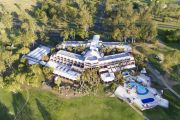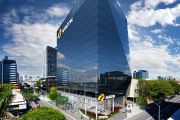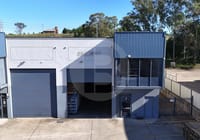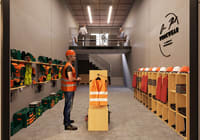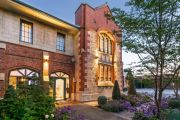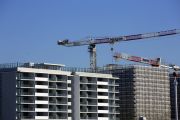
Demand for housing and sheds to drive Frasers forward
Australia’s chronic undersupply of housing and strong demand for industrial property in Sydney, Melbourne and Brisbane will be big profit drivers for property giant Frasers, as it weathers downturns in the UK office market and the impact of higher interest rates globally, the Singaporean company said on Monday.
Half-year results published by Frasers Property Limited, which manages $55 billion of assets globally across listed and unlisted funds, showed a 20 per cent drop in revenue to $S1.55 billion ($1.67 billion) in the six months to March 31 and a 16 per cent slump in profits before interest and tax to $S578 million.
This lower interim profit, Frasers group CEO Panote Sirivadhanabhakdi said, was mainly as a result of write-downs across its UK office portfolio as well as a high interest rate expense.
Amid these market headwinds, Mr Sirivadhanabhakdi said Frasers would continue to unlock value through its capital optimisation program – the group divested $S1.1 billion of non-core properties over the half year – and by increasing its development exposure in markets like residential and industrial that offered better risk-adjusted returns.
In Australia, which accounts for 28 per cent of its asset base and 25 per cent of its pre-tax profits, Frasers will further leverage off strong demand for housing through its local residential development arm Frasers Property Australia, a business created when Frasers bought Australand in 2014.
Over the half year, off-the-plan unit sales increased 60 per cent to 716, lifting total contracts on hand to 1679 (worth almost $800 million), while settlements surged 78 per cent to 726 units.
During this period, Frasers achieved first settlements at its Midtown community in North-West Sydney and at The Quarry in Brisbane. It also kicked off sales at its redevelopment of Yarraville’s former denim factory site in inner Melbourne.

Frasers also settled its circa $250 million acquisition of the undeveloped portion of the 366ha Windermere Estate in Melbourne’s west over the half-year, which it bought from Country Garden.
“It’s fair to say, the outlook for residential in Australia is reasonably strong. There is no doubt about that,” said Frasers Property Australia CEO Cameron Leggatt.
“We have got strong migration into the country, and we have an undersupply of housing so [when considering] the outlook over the medium to long term, we are fairly optimistic,” he said.
“Right at the moment there are headwinds with rising interest rates and construction costs as it relates to built form in particular, but we are navigating those reasonably well.”
Mr Sirivadhanabhakdi added that it was “very clear” that residential demand in Australia would make a strong contribution to Frasers Property Limited, “not just in the short term but over the medium and long term”.
In the industrial sector, Frasers will expand its $S6.2 billion portfolio of Australian warehouses after acquiring several sites in NSW and Victoria over the half year and adding about 270,000sq m of new projects to its Australian pipeline.

“If you look at the various supply and demand thematics, they are all extremely strong,” said Frasers Property Industrial CEO Reini Otter.
“Vacancy is still at historic lows, the barriers to entry in getting new land serviced [for industrial use] are still extremely high, and the demand profile from our customers is quite diverse. We expect this to continue,” Mr Otter said.
He added that the market in the near future would favour those players (like Frasers) that are developers of high-quality industrial assets in prime markets such as Sydney, Melbourne and Brisbane.
“So, we are quite confident about the market in Australia,” Mr Otter said.

